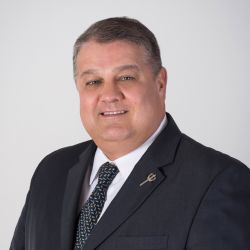By Margaret King
[5 minute read]

When schools made the leap to online learning due to the coronavirus pandemic, Sweetwater Union High School District – California’s largest secondary district, with 38,000 students – faced daunting challenges.
In the diverse community that the district serves in San Diego’s South Bay region, many students lacked computers or internet access. In addition, the district’s teachers varied widely in their familiarity with the technology and techniques of online instruction.
As Sweetwater administrators worked to meet students’ needs, they also looked for a way to assist teachers with the transition. Help came from UC San Diego Extension, which stepped in to provide free training for the district’s 1,900 teachers through an innovative new program, Teaching Online Essentials (TOE).
“We reached out to them because we knew they had developed this training,” said Maria Lizarraga, Sweetwater’s executive director of curriculum and instruction. “It was a wonderful collaboration and a great opportunity for us.”
Sharing expertise with the community
Extension has offered a certificate program in online teaching for over 15 years. When the pandemic struck, leaders of Extension’s Education and Community Outreach Department took advantage of this expertise in online education by swiftly distilling their proven curriculum into a program that delivers focused, flexible training for schools in need.
 “We realized as early as March that the transition to remote learning would not be a slow glide, but rather a jarring shift that would disrupt the equilibrium of school communities around the world,” said Morgan Appel, Extension’s assistant dean of Education and Community Outreach. “We were inspired to act to offer contextually grounded assistance to teachers, parents and all members of school communities.”
“We realized as early as March that the transition to remote learning would not be a slow glide, but rather a jarring shift that would disrupt the equilibrium of school communities around the world,” said Morgan Appel, Extension’s assistant dean of Education and Community Outreach. “We were inspired to act to offer contextually grounded assistance to teachers, parents and all members of school communities.”
The Girard Foundation, a nonprofit that supports innovation in K-12 education, provided seed funding for Teaching Online Essentials. Although the program was prompted by the pandemic, the curriculum is designed to serve as an evergreen resource beyond the current health crisis, Appel said.
So far, more than 4,200 teachers and trainers in California, Michigan and Baja California have taken advantage of TOE. Offering the free training is a natural outgrowth of UC San Diego’s mission, Appel explained: “We believe that as a top-tier research university with a service mission, we are duty-bound to provide support to our communities – whether they be just down the freeway or across the globe.”
 Edward Abeyta, associate dean of Education and Community Outreach, noted that when he and Appel meet with school officials, they typically give out business cards with “yes” written on the back. “That’s a way of letting them know, whatever help you need, the answer is ‘yes,’” Abeyta explained.
Edward Abeyta, associate dean of Education and Community Outreach, noted that when he and Appel meet with school officials, they typically give out business cards with “yes” written on the back. “That’s a way of letting them know, whatever help you need, the answer is ‘yes,’” Abeyta explained.
In implementing TOE, Extension experts collaborate with district administrators to tailor the training to a district’s needs. In Sweetwater’s case, Lizarraga said, “We worked together starting with 160 teachers to pilot how it would work with all of our teachers. We were able to align the course to what we are doing in the district.”
A template for remote teaching
The training took place in mid-July. Amy Kaufman and Karen Young, two Extension instructors who helped design the TOE curriculum, presented one-day online sessions for teachers from Sweetwater’s 13 high schools and 11 middle schools, as well as from its alternative and adult education programs.
Kaufman noted that TOE was made to be flexible, with options for five days of training, two days or as little as one day. “What’s nice about the curriculum is that it can be delivered in a variety of formats,” she said.
A key challenge faced by teachers transitioning to online teaching is determining which parts of a lesson to deliver in synchronous sessions, where the teacher interacts with students in real-time, and which parts to cover in asynchronous sessions, where students work independently, Kaufman noted.
The Sweetwater training addressed this challenge by introducing a lesson plan template that starts with the teacher presenting a live module. Students then work partly on their own for several sessions before rejoining the teacher to reflect and share. As part of their training, Sweetwater teachers created and shared a sample online lesson plan using the template.
Using the lesson plan “takes that pressure off teachers to have to be on stage every single minute,” Kaufman said. “They’re trying to make a 3D situation out of a 2D format, and it’s exhausting, and we recognize that.”
Sweetwater’s Lizarraga agreed. “It’s a way of delivering instruction very mindfully in distance learning,” she said. “You really need to think: What are you going to do during the live time and what work are you going to give students during the independent time?”
Tool kit for online educators
The TOE training also helped teachers sort out the confusing array of online tools to assess students’ progress. “To have all these tools thrown at teachers by all of these companies, it was well-intended, but it was too much,” Kaufman said. “The approach we took was to narrow it down to a small pouch of tools that teachers could learn in under 10 minutes and apply the next day.”
Young, Kaufman’s co-instructor, said TOE was developed with the understanding that each teacher has a unique teaching style. “A teacher’s individual identity is what makes his or her classroom come alive,” she said. “This course honors that individuality by providing a multitude of resources so teachers can reflect on their teaching and implement technology that meets their needs.”
Lizarraga said teachers appreciated the focused approach of the training. “Our teachers really liked the instructors and the resources they provided and also liked their flexibility and availability,” she said. “The main purpose was to set the tone for our teachers to really think about the process of teaching online.”
Sweetwater teachers surveyed after the training said it helped prepare them for the new school year, which began Aug. 3. “Taking this course has helped me evolve as a teacher and learner,” one participant wrote. “I feel I am more prepared to reach our students and meet their goals.”
Kaufman praised the role of administrators like Lizarraga in making TOE a success. “It takes the district leadership to pave the way for this kind of training to happen because it takes a lot of planning and preparation,” Kaufman said. “It’s not something straight off the shelf. It’s all about the leaders being willing to come alongside us to create this opportunity for teachers.”
Administrators and educators who want to learn more about Teaching Online Essentials please contact Morgan Appel or the Education department at unexeduc@ucsd.edu or (858) 534-9286.